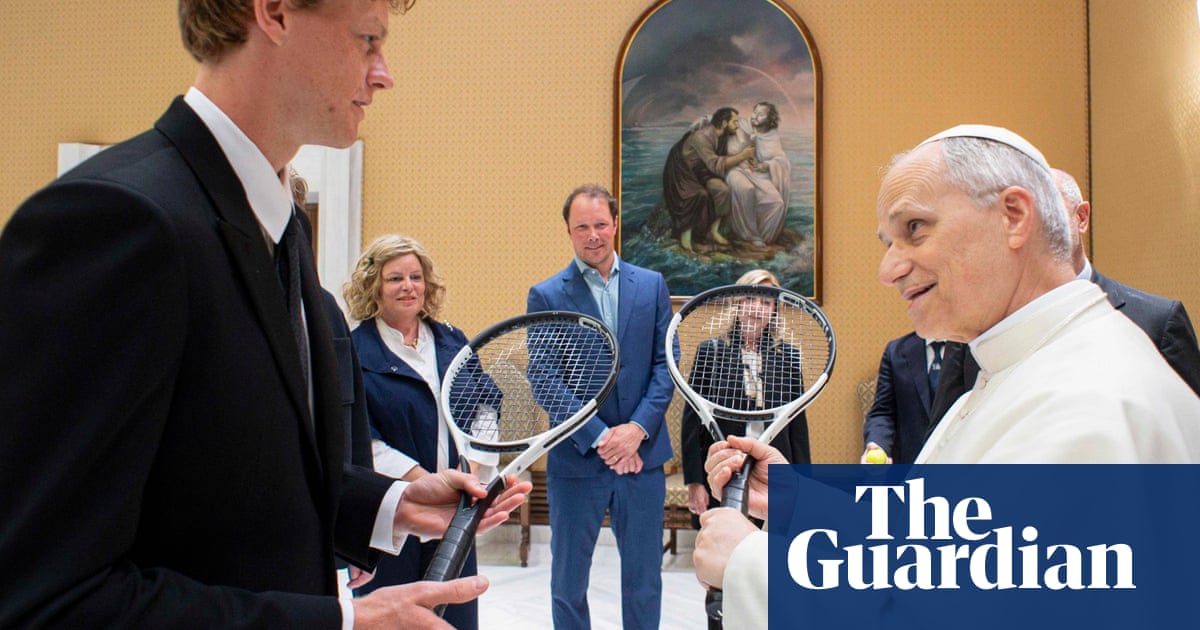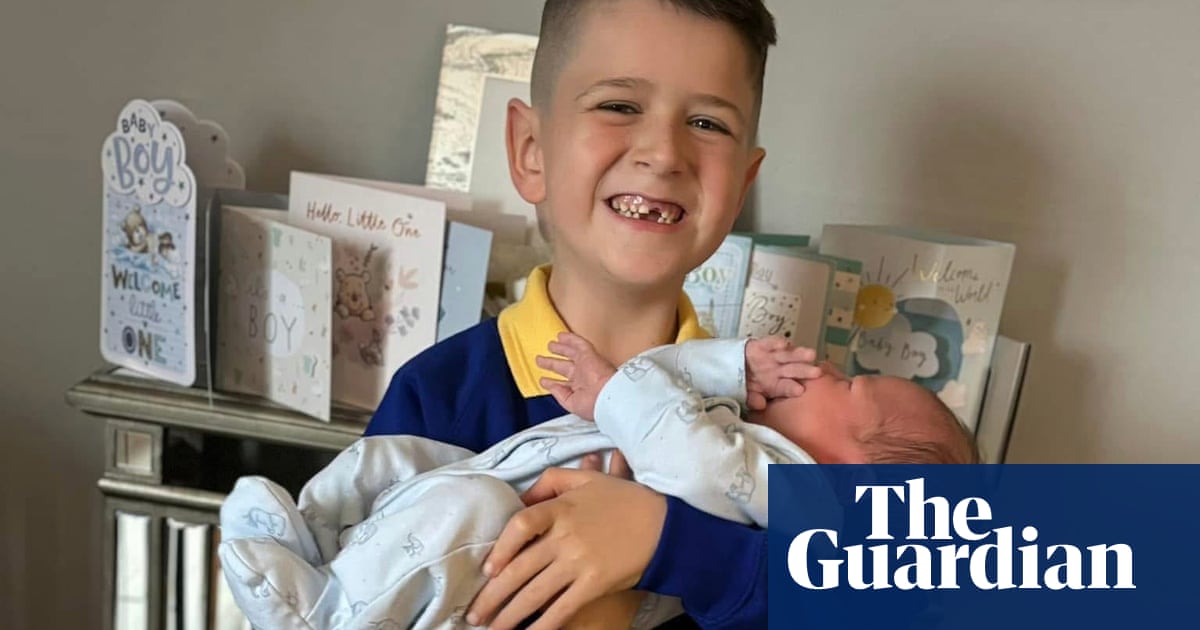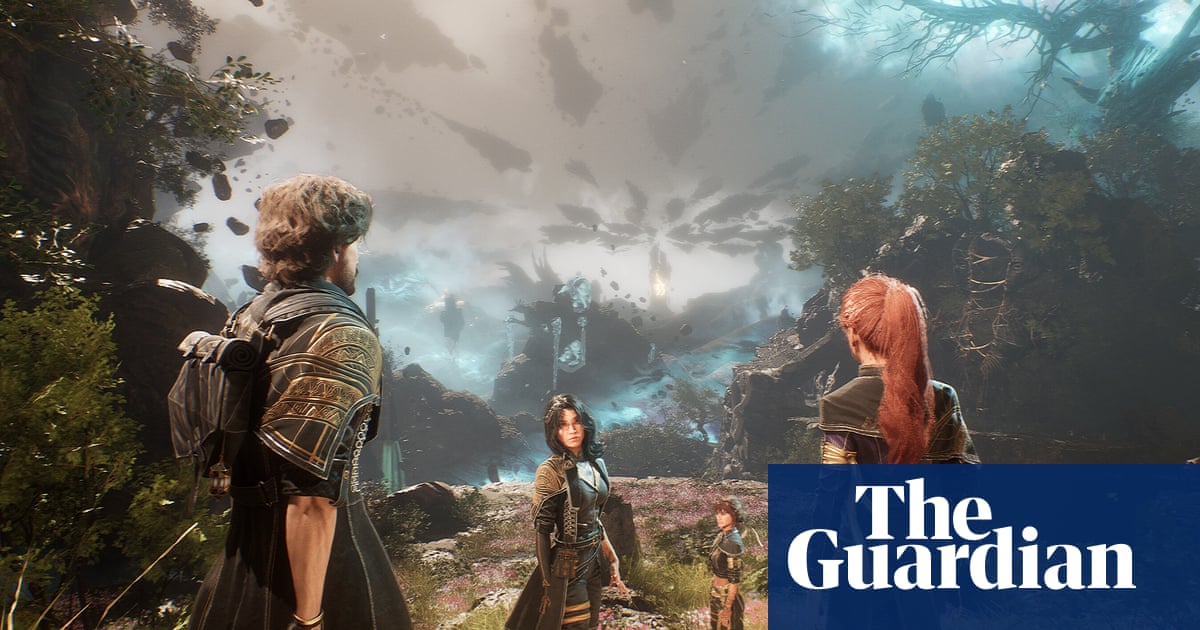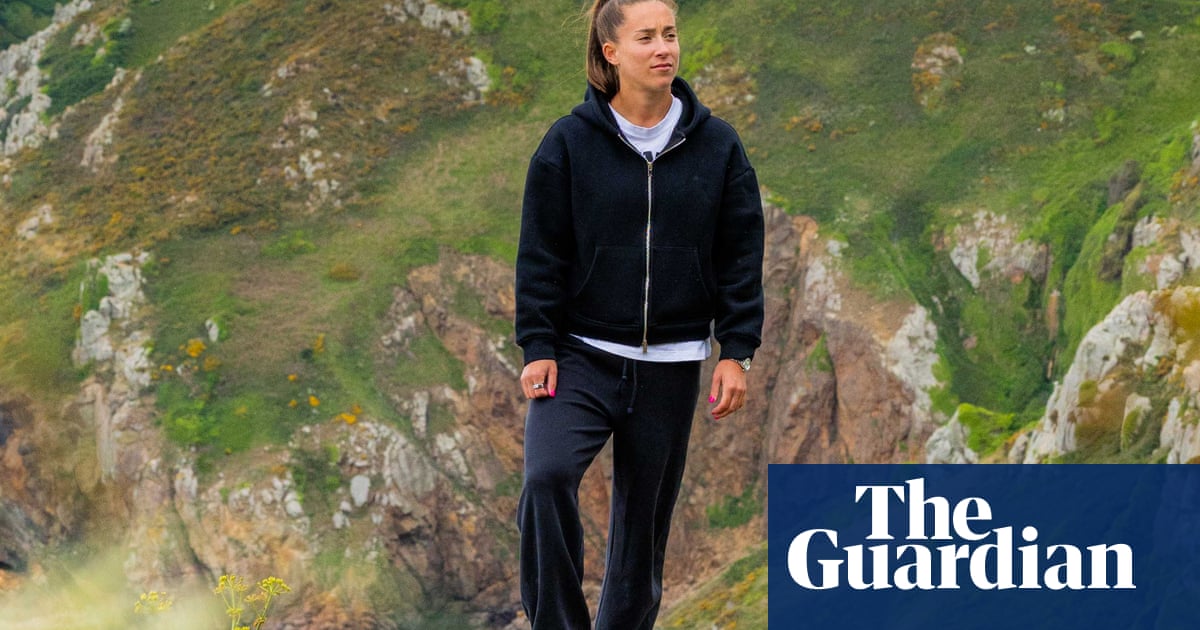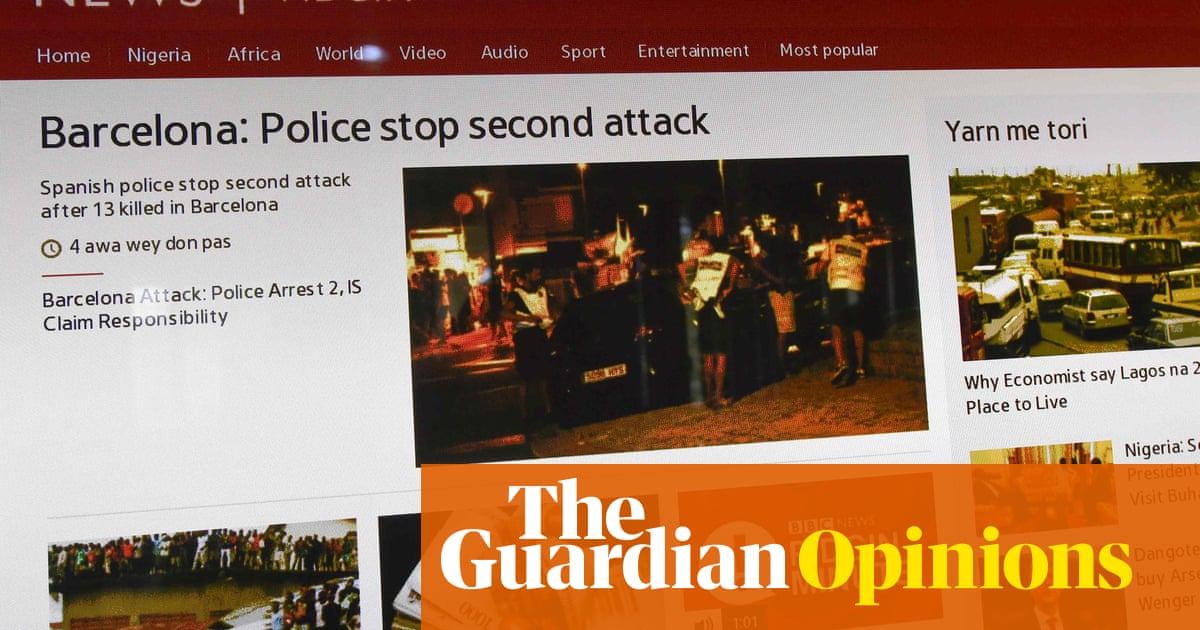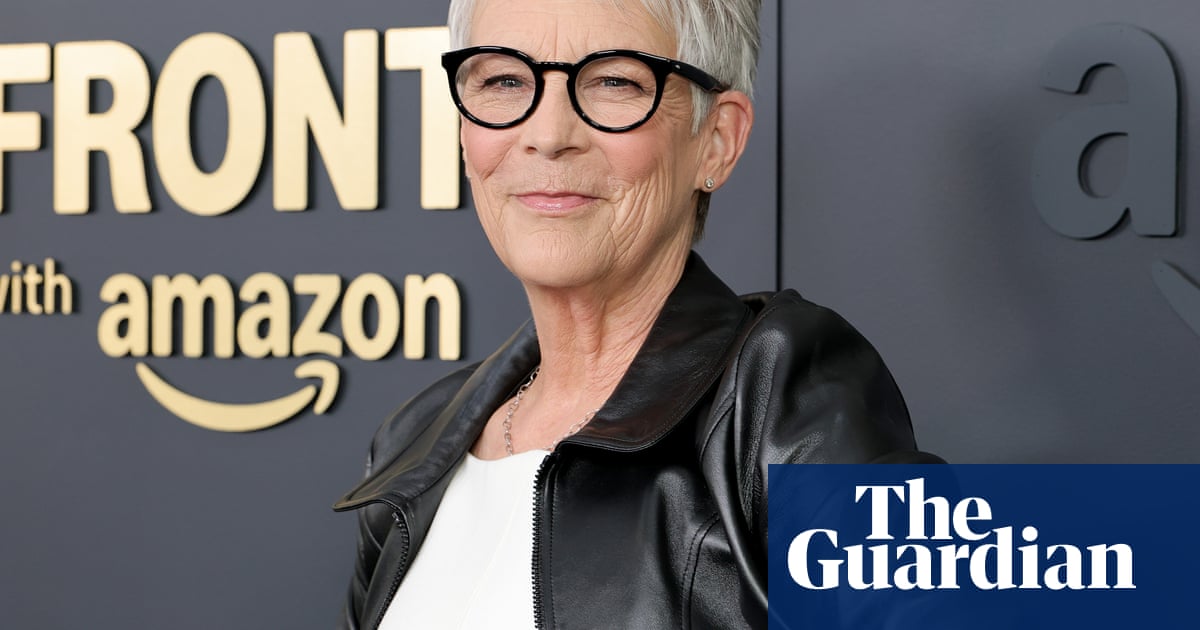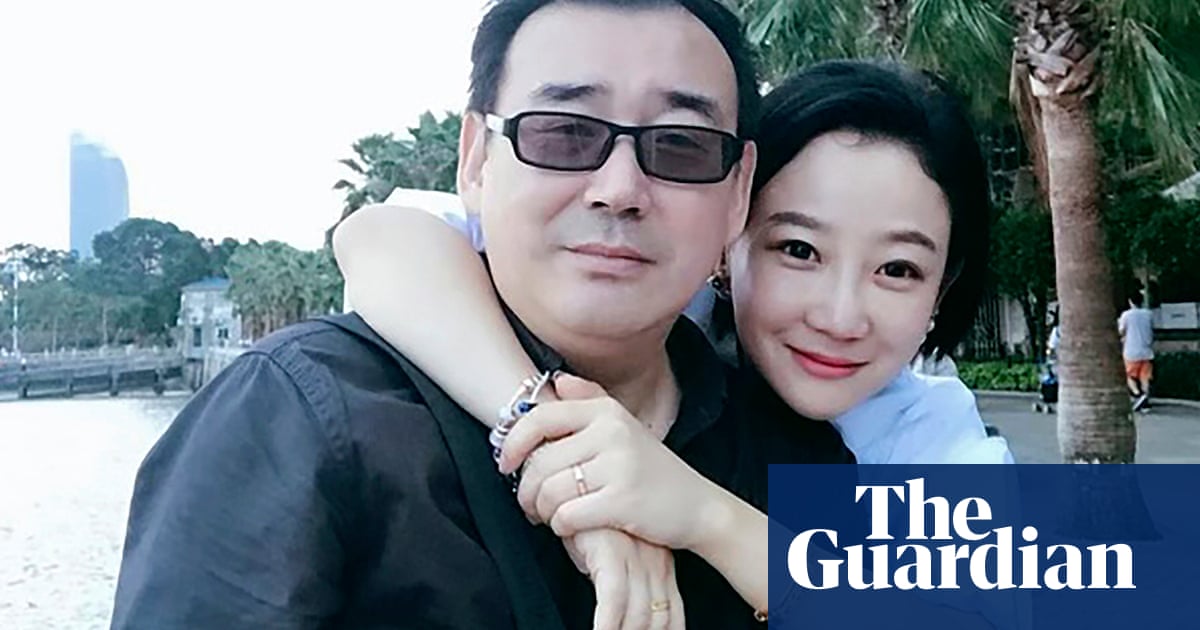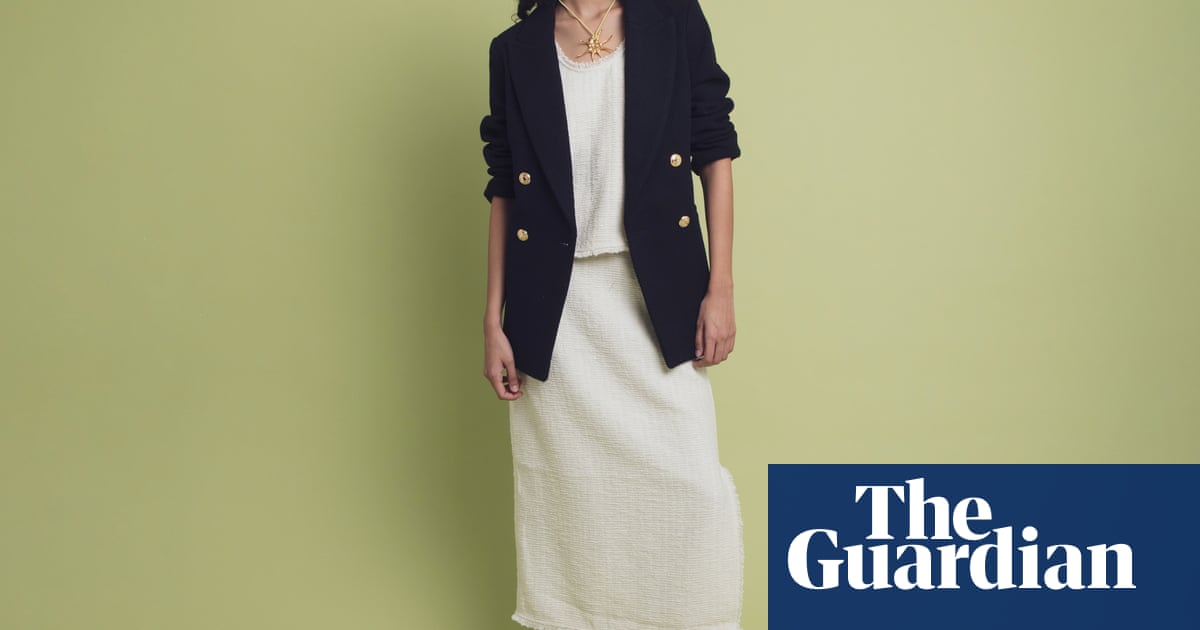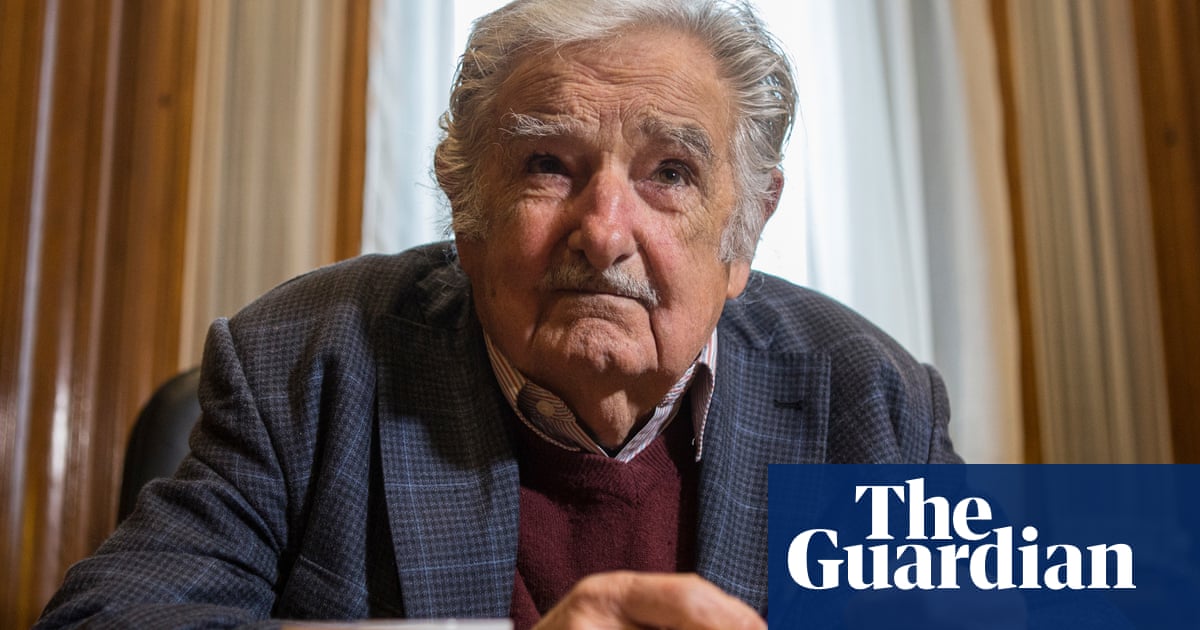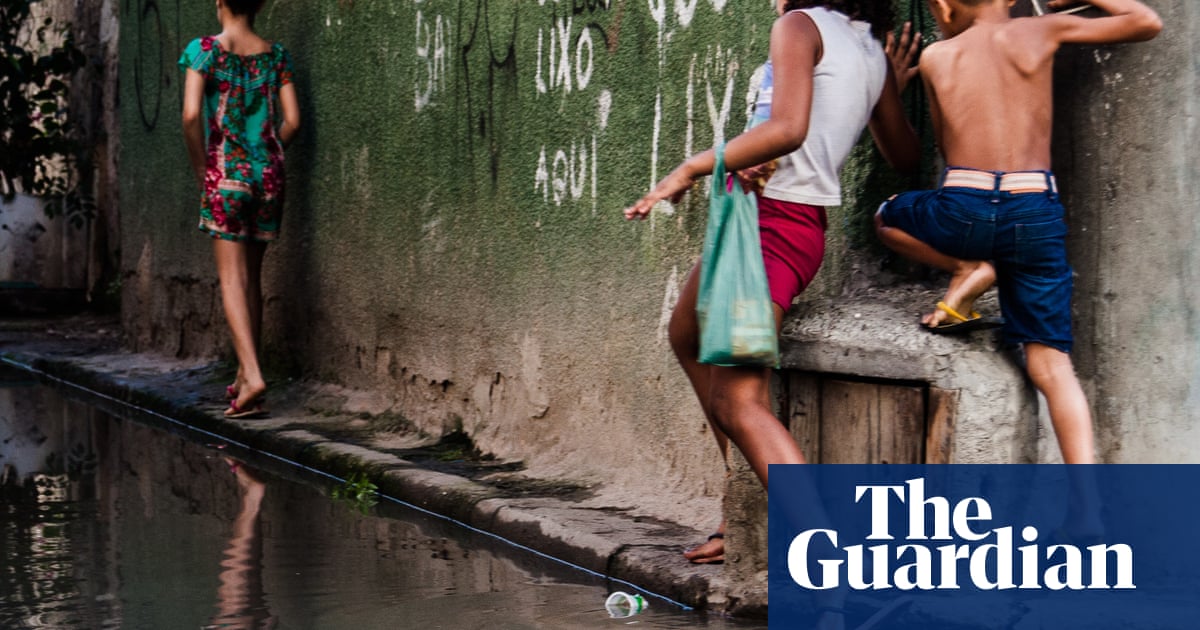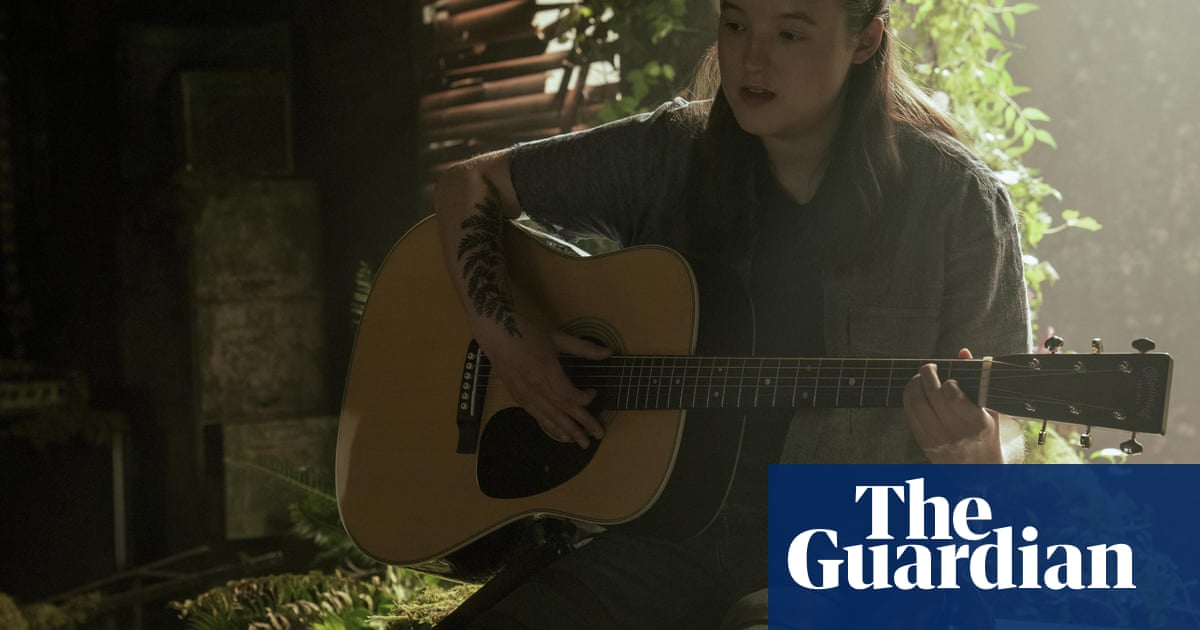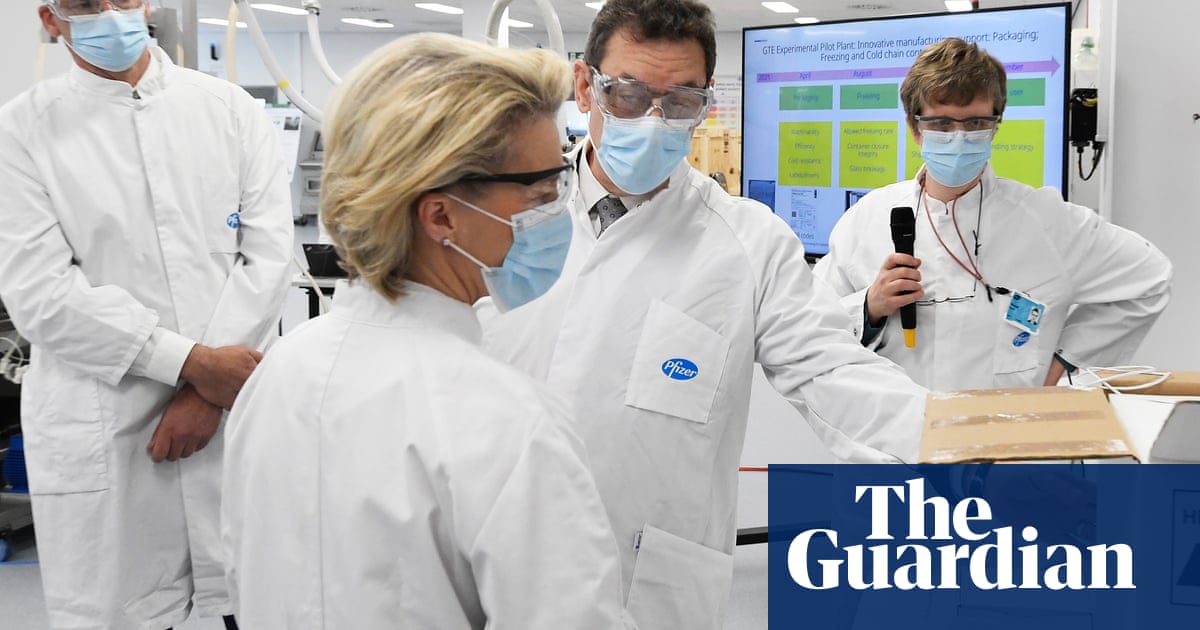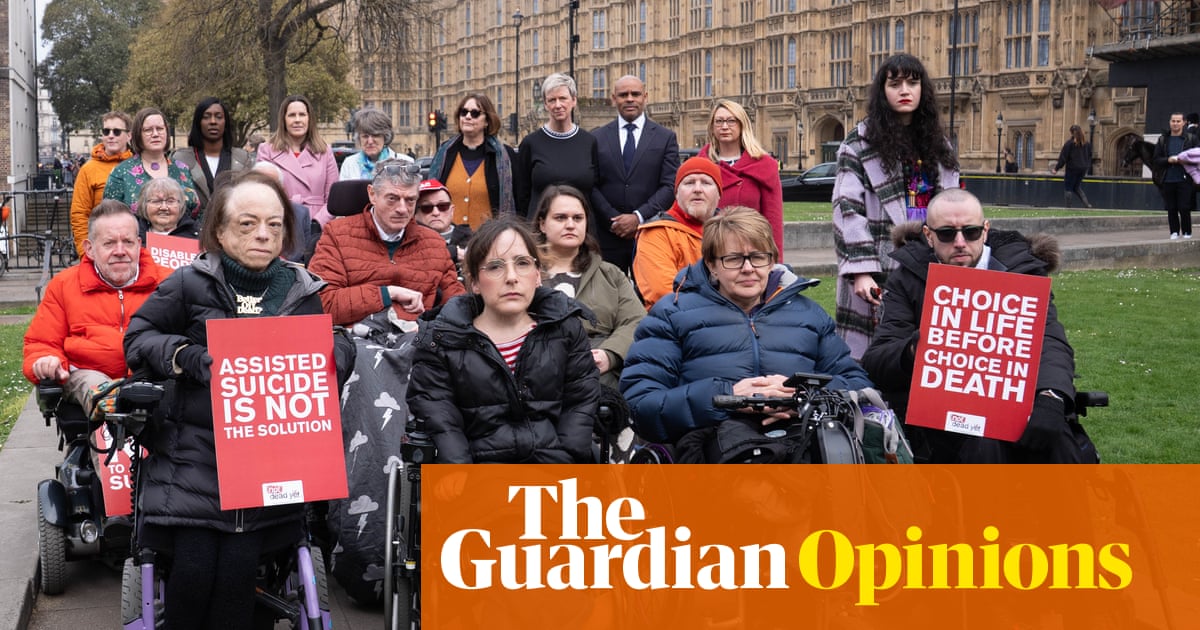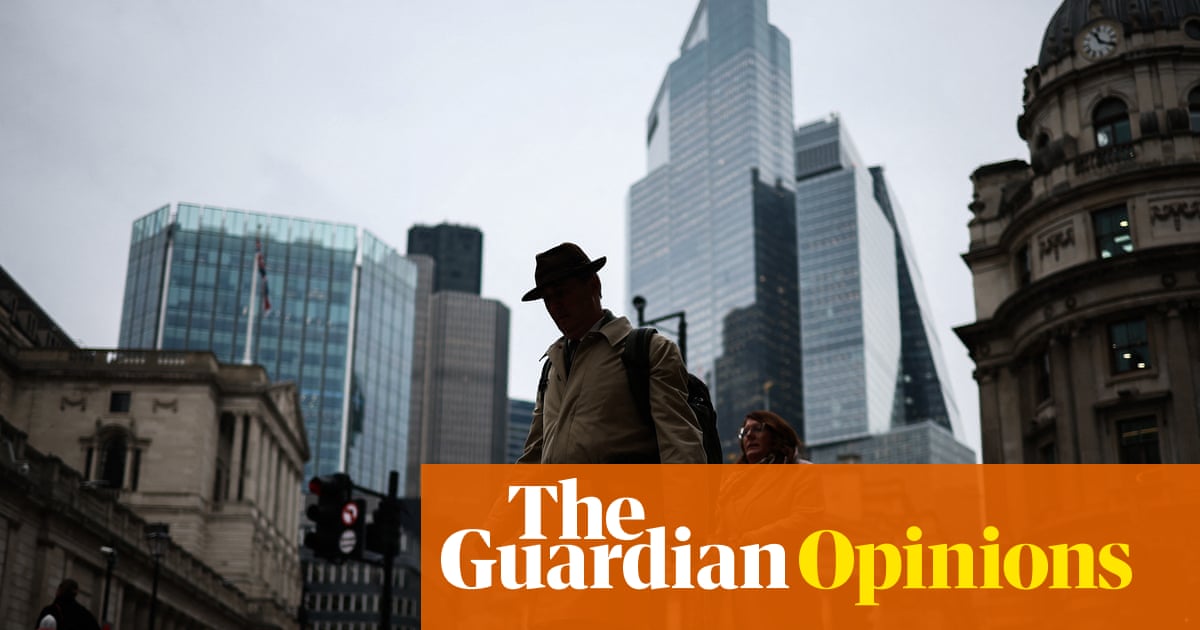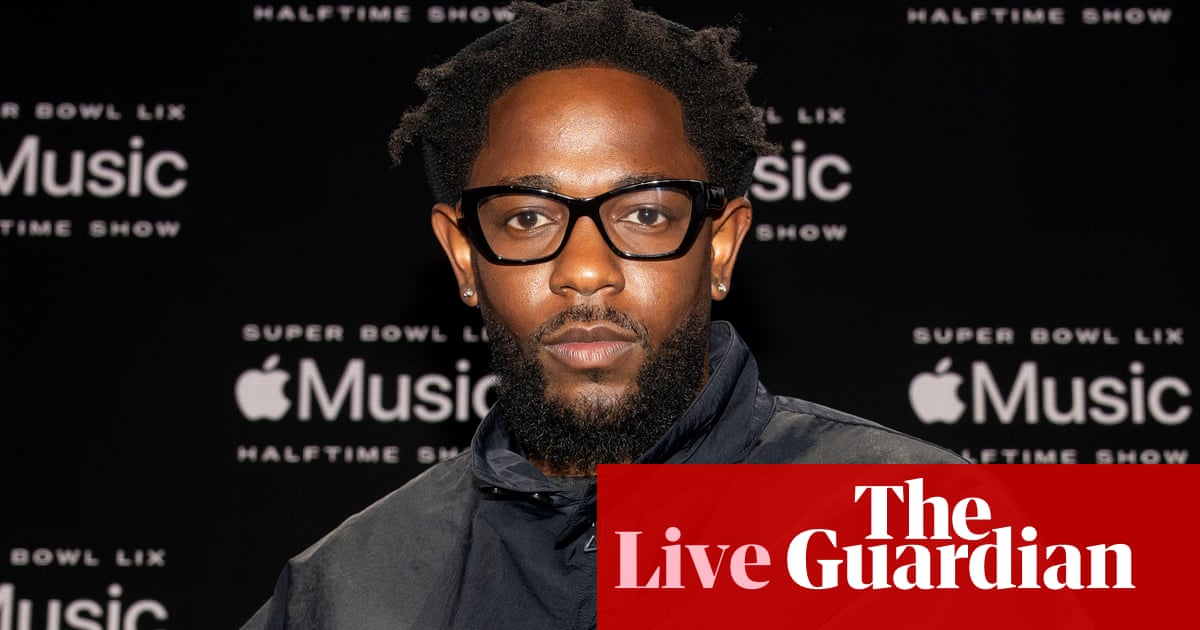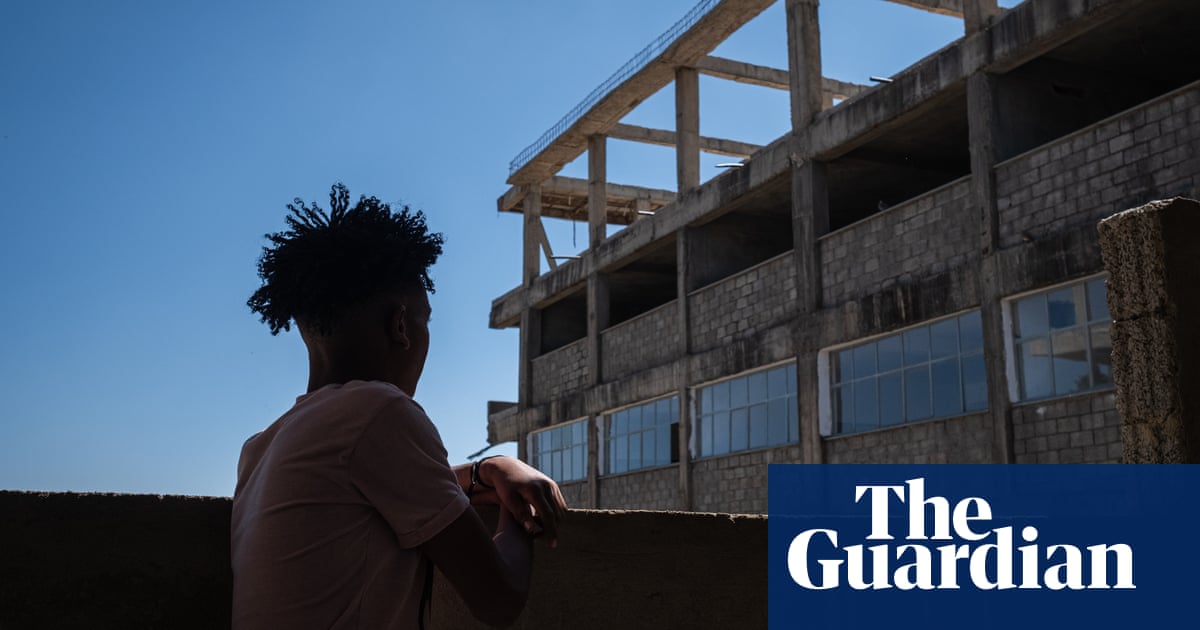When he was younger and his parents were out of the house, Ed Atkins used to sit on the landing and force himself to imagine all the ways they might die. “My thinking was that if I imagined it first, then it would be very unlikely to actually happen,” says the 42-year-old artist.
Atkins’ parents didn’t succumb to any of the ways he had invented. But during the final year of his master’s course, his father, Philip, was diagnosed with cancer and died six months later, during Atkins’ degree show, in 2009. “It’s a huge thing, obviously, losing your father,” says the artist. “And it started to feed into what I was reading and was interested in. His death, and death generally, is in all of my work.”
That fact may not be immediately apparent to those encountering Atkins’ work. He has spent the last two decades at the forefront of digital art, creating strange videos that are humorous, creepy – and likely to leave you feeling a little untethered. Atkins likes to inhabit CGI avatars and perform as them. In 2014’s Ribbons, he became a bare-chested, tattooed smoker known as Dave with a penchant for singing maudlin Randy Newman songs.

In Pianowork 2, from 2023, he took on the role of himself – albeit an uncanny valley version of himself. We watch the virtual Ed trying to pick out the notes of Klavierstück 2, an experimental composition by the Swiss musician Jürg Frey. His sighs, his facial hairs and his pained expressions all appear to be amplified. Atkins’ films are often interspersed with poetic soliloquies, cryptic subtitles and intrusive sounds – a burst of tinnitus here, someone farting there. They’re both moving and confusing.
You’re not really supposed to “get” them, says Atkins. Even he can be unsure of what they mean. What he wants, instead, is to create certain emotional sensations within the viewer – “a slightly unmoored feeling”. And what could be more unmooring than grief?
Atkins’ career highlights are about to appear in a survey show at Tate Britain in London. Alongside the digital works will be self-portraits, text pieces, embroideries and a series of Post-it notes he drew on for his daughter’s packed lunch boxes during the pandemic. There is also a new work that addresses his dad’s death more directly: a two-hour film in which the actor Toby Jones reads aloud the cancer diary Philip wrote during his final months.

In the “beautifully written” journal, Philip discusses fellow patients on his ward, adjusts to life under the care of others and comes to the startling realisation that he had been loved, and that nothing could be more important. “A lot of weeping and truth,” is how Atkins describes it. “It’s a lot. But it’s also universal. Many people are going through that same thing. One of the last lines in the diary is, ‘When and how does one begin to think about dying?’ That’s literally days before he dies. You can never come to terms with it.”
People at the very end of life can experience extraordinary clarity. In his final TV interview before he died of pancreatic cancer, the writer Dennis Potter talked about witnessing the “blossomest blossom”. Atkins hopes he can attain such wisdom before he’s dying himself. Perhaps having someone read the diary out loud is an attempt to get there.
We meet in Tate Britain’s auditorium, a week before the show opens. Atkins – who’s wearing a trenchcoat, pinstripe shirt, Adidas three-stripe joggers and a gold hoop in each ear – is extremely affable. But he tends to respond to questions with ideas rather than answers. Talking to him can be like experiencing his art: easy resolutions remain forever out of your grasp.
Another way to get to know Atkins is to read his new memoir, Flower. Be warned, however: it is unlike any memoir you’ve read before – 89 pages long and written as one long paragraph of observations, it reveals its author through a series of likes, anxieties, routines and what he calls “sexless kinks”. Among other peculiar facts, we learn that Atkins has an inordinately strong bladder, enjoys eating wraps from pharmacies and has a failsafe method for stealing expensive wine from big shops.
It can feel thrillingly intimate and honest, even though it is patently absurd. “Nobody talks about having a strong bladder in their autobiography,” laughs Atkins. “Not unless their bladder exploded or something. What an insane place to try to find truth! So I was interested in what people qualify as worth telling.”
For someone who has long operated behind avatars and technology, Atkins admits that putting this book out there is unnerving, especially as, buried within the stream of mundane information, are morsels of shocking revelation – not least his disordered relationship with food and his hatred of his physical appearance. “It’s hard to say out loud,” he says, tentatively, “but I don’t like my body or the way I look at all. I think about it too much. Some of that is an inheritance, I think, from family stuff.”

Was it a struggle to make the self-portraits (his head rendered in red pencil on yellow legal paper, say) that appear in the show? No, he replies. “What’s hard is leaving the hotel this morning. It’s got an annoying array of mirrors, so I’m seeing angles of myself where I’m bulging in ways that are just awful. Whereas fastidious attention, trying to capture a bit of razor burn on the cheek, that’s really exciting.” He pauses. “They’re going to do photos for this piece in a minute and I will not look at them. I will never look at them.”
One thing that does come through in Flower is Atkins’ utter adoration for his children (he has a daughter and a son). It’s a love so strong not even the memoir’s deliberately monotonous and flat tone can mask it. “A received wisdom is that having children is maybe the end of something,” Atkins says, “but my best work has all been made since I had children.”
after newsletter promotion
Atkins lives with them and his partner in Copenhagen, but he grew up in the village of Stonesfield near Oxford. His mum taught art and his dad was a graphic artist, so it’s unsurprising that he displayed a gift for drawing and painting. “All artists start out because they’re good at drawing,” he says, “and then art school unmoors everything. It takes a long time to get back, if you ever do, to that point of pleasure.”
He says having kids helped him get there: “I love how every gesture that my daughter or son makes on a piece of paper is better than most art, just by dint of its complete freedom.” That’s why the 700-odd Post-it notes he drew on for his daughter during lockdown have ended up forming the centrepiece of the show. He never intended these cartoonish missives to go on display, but then he realised: “It’s the thing I can really hang my hat on and say, ‘This is me.’”
Shortly before this interview, Atkins found himself crying after showing a curator a shot of his son on his phone. Photographs do that to him. “Maybe this is at the core of some [of the work], the sense of representations being grotesque in relation to the real thing – in relation to a living, beautiful two-year-old.”
In Flower, he describes the images he keeps on his phone as pictures of his “dead children” – a bracing description, given they are very much alive. He says he used that term because looking at flat images of them, when they’re not around, makes him spin out. “My brain immediately reaches for this horrible morbidity: what if they’re dead? Even the presence of a phone in my pocket makes me worry it’s about to ring with some news. It’s sort of ridiculous. And it’s not a way to live!” He laughs, then adds: “Having a kid is like suddenly your heart is living outside your body and it’s the most vulnerable thing, you know?”

I do. I tell him I’m also prone to morbid thoughts – that sometimes I will look at a photomontage that my phone has generated featuring my kids and feel as if I’m watching it after they’ve died. Atkins nods. “The mechanisms used, such as the slow cross-fading and the nostalgic music, is the language of remembrance. It’s an ‘Oscars in memoriam’ situation. It’s charged with loss even if no loss exists.”
There’s something very Ed Atkins about this whole conversation: two men who’ve just met, sitting in an auditorium talking about their deepest anxieties. I can’t tell if it’s his manner or something about his work, but Atkins is an easy person to open up to. In fact, it reminds me of one of his most affecting works: The Worm, from 2021, in which we hear a real-life conversation between the artist and his mother.
I say real-life although, in the video, Atkins is inhabiting the avatar of a sharply dressed chatshow host from a bygone era, smoking Silk Cut. During their conversation, Atkins’ mother talks about her struggles with depression and how it also affected her own mother. She reveals that she’s never really felt like a “bona fide woman” and adds that Atkins’ father was never comfortable with the way he looked either. It’s delicate stuff: raw and tender.
“That was difficult for me,” laughs the artist, referring to the process of making the video, “because I was wearing a Lycra onesie and there were two German men in the room next door listening in.” The piece raises all sorts of questions about emotional inheritance, human connection and what constitutes a life.
This, really, is the heart of what Atkins does. When he started out, Atkins was often called upon as a spokesperson for digital art – and he was happy to oblige, aware that it provided opportunities to show his work. But the emotional side of what he did was often not at the forefront of these discussions. “The truth is, technology in and of itself is not interesting to me,” he says. “I don’t actually care at all about computers. Which is tricky because people are always asking, ‘What do you think about AI?’ And, honestly, I don’t think about it.”
Atkins actually believes that, for all the giant leaps being made right now, technology will never come close to replicating what it means to be human. “It sounds almost religious,” he says, “but I don’t think any machine, even in a million years, will be like the real thing. It will never be a person. That’s really my faith.”

 1 month ago
32
1 month ago
32
